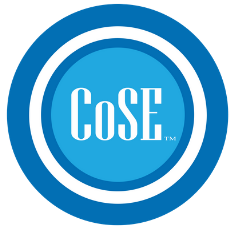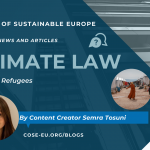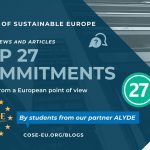Written by: Semra Tosuni
Reading time: 15 minutes
The 3rd European Union (EU) macro-regional strategies (MRS) week took place online from 7 to 11 March 2022. It is an event organized by the European Commission. The motto of this event was “Engage, Empower, Evolve” and was specially centered around three topics Youth, European Green Deal and Social Innovation. Also, the actual situation with Ukraine was also take into consideration because of its impact in our region and because of the fact that Ukraine, even if it’s not a EU Member State, is part of the EU macro-regional strategies.
It is the biggest Brussels-based event dedicated to connect stakeholders from line Ministries of the macro-regional strategies and also EU institutions. According to the European Commission presentation of the event, it should also help public to understand more the added value of MRS.
I had the opportunity to attend to six conference which were about different topics:
- ‘Young innovators as drivers of macro-regional development’
- ‘From global to local: how EU macro-regional strategies mobilize people, institutions and funds for the implementation of the European green deal’
- ‘Spatial strategies supporting green and just transition in European macro-regions’
- ‘Reducing inequalities on MRS though social infrastructure and innovation’
- ‘Promoting green transition and sustainable growth though cross-macro-regional smart specialization”
- ‘Women in innovation: promoting a gender equal EU green deal’
What is a European Union macro-regional strategy?
According to the European Commission presentation on the subject, a European Union macro-regional strategy is “a policy framework which allows countries located in the same region to jointly tackle and find solutions to problems or use the potential they have in common”.
During the conferences, all four EU macro-regional strategies that have been adopted by the European Union were represented in all topics.
For information, the four EU macro-regional strategies actually are:
- The EU Strategy for the Baltic Sea Region (2009).
- The EU Strategy for the Danube Region (2010).
- The EU Strategy for the Adriatic and Ionian Region (2014).
- And the EU Strategy for the Alpine Region (2015).
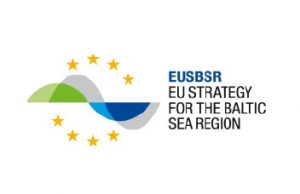

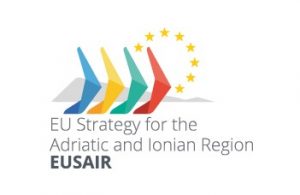
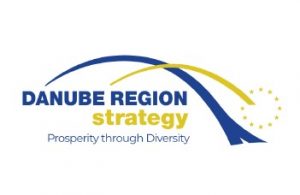
All together, they reunite 19 Member States: Austria, Bulgaria, Croatia, Czech Republic, Denmark, Estonia, Finland, France, Germany, Greece, Hungary, Italy, Latvia, Lithuania, Poland, Romania, Slovak Republic, Slovenia and Sweden.
But that’s not all, there also concern 8 non-EU Member State countries: Albania, Bosnia and Herzegovina, Liechtenstein, Moldova, Montenegro, Serbia, Switzerland and Ukraine.
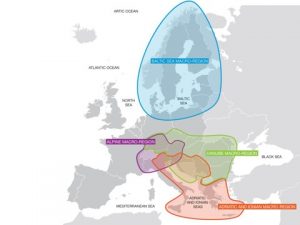
These regions are facing challenges that know no borders such as climate change, pollution, unemployment, and sexism so the aim is to offer opportunities and protect European citizens and its environment. Moreover, they do contribute to the EU priorities such as:
- The EU Green Deal
- An EU stronger in the world
- An EU closer to citizens
Youth
‘Young innovators as drivers of macro-regional development’
Diana Madill, the moderator said that ‘2022 is the European Year of Youth’. Indeed, the main goal is to put into light the importance of young European to build a better future, more green, more inclusive and more numeric. Actually, Tirana is the European Youth Capital. So, the question raised was how EUMRS enable young people to develop and put into practice innovative solutions to the big challenges?
Antoaneta Angelova Krasteva, Director of Innovation, Digital education and International Cooperation at the European Commission. She mentions the devastating consequences of the war in Ukraine. She says that young people want democracy, respect for their fundamental rights. The MRS concern all regions and address issues such as pollution, unemployment and climate change. Moreover, the Erasmus + program offers many opportunities in the field of training, sport and education for young people. Other programs also mention solidarity, international cooperation in different fields of culture and it insists on the importance of youth involvement in innovations. The year 2022 being the year of the European youth, it is essential to promote the green future of young people and to support European youth initiatives. The Budapest Institute is fine-tuning the novelty in Europe by young people in key areas such as global warming. This institute has become very important with more than 2000 partners and the support of 2000 start-ups. Higher education is very important in European universities. Antoaneta Angelova Krasteva also emphasizes the importance of digital skills for the future.
Martin Rummelein is a representative of the Baltic Sea Youth Camp. This program allows for the gathering of large numbers of students. They deal with different subjects and in particular with the objective of persuading governments to take into consideration subjects such as the climate, freedom in Europe, living together in peace despite international conflicts. The EU also offers grants to launch youth initiatives such as beach clean-ups.
Then, Adriana Terman, representing Trainer GirlsGoIt talks about how this organization. It is an organization that promotes the empowerment of young women. It promotes informatic studies in particular and the place of women within them. Why young women? To go beyond stereotypes and overcome the gap between men and women in the important field of computer science. What can be done to convince young people? Talk about projects in school.
Another person, Eva Dusak talked about the Alpine Youth Council and the active role of young people in the Alpine region. The activities carried out by Youth Alpes bring innovation and new ideas between young people for the region.
Another last intervention of two young entrepreneurs, Nick Stanojevic and Val Vidmar that create a concept to help blind people. This project is innovative and helps people too! They encourage young people to start new projects and innovations!
European Green Deal
‘Spatial strategies supporting green and just transition in European macro-regions’
First, Daniel Meltzian, representant of the Baltic sea macro-regional strategy and of the Federal Ministry for Housing, Urban Development and Building in Germany, has presented the vision and strategies around the Baltic Sea Region (BSR). It is the first macro-regional collaboration in Europe with common and joint actions among ministries on spatial planning and development since 1992 with VASAB (Vision and strategies around the Baltic sea) being integrated in the project, it participates and promotes development in the region. The overall goal is to increase territorial cohesion in the BSR by 2030 for example by reducing socio-economic divides. There are two focus areas that are land-based spatial planning and maritime spatial planning.
Also, Daniel Meltzian presented the VASAB Long-term perspective for the Territorial development of the BSR which is being updated with time. The main perspectives are for instance to make BSR a well-integrated and coherent macro-region; fast reliable and environmentally efficient technologies of transport, information, communication and also to protect Baltic Sea environment and sustainable use of the marine resources. This programme is co-financed by the European Regional Development Fund.
Then, Maria Topsidou, represented the spatial foresight of the BSR and the update of the VASAB Long-term perspective towards the 2040 vision. First, the pearls of the region. By 2040, all places, rural areas, small and medium-sized towns and metropolitan areas should offer high quality of life building on their own comparative advantages and complementarities. Concerning strings, by 2040, the physical and virtual connectivity for both goods and people should be green, efficient, reliable, and affordable all over the BSR.
Also, energy production should be carbon neutral, secure, decentralized, and well-connected throughout the BSR. For patches, by 2040, the terrestrial and maritime environment has high levels of biodiversity resilient ecosystems, and overall a healthy nature all over the Baltic sea region. And finally, for the system of the BSR, by 2040, the various relevant planning systems should communicate smoothly across countries, sectors, and levels of governance.
Robert Lichtner introduced first the impact that had the Russian-Ukrainian conflict on the European Strategy for the Danube Region (EUSDR). Indeed, it is specifically impacting the European macro-regional strategy on that region and it has consequences on its development as well.
Then, Robert Lichtner presented the EUSDR which addresses a wide range of issues and topics divided among four pillars which are: strengthening the region, connecting the region, building prosperity, and protecting the environment. The top five strategic topics among programs include energy efficiency, decarbonization, climate change, and green infrastructure. The active commitment of the EUSDR to environmental protection and climate change was assessed as very positive in the EUSDR Policy. The EUSDR plays an important role to transfer the EU Green Deal priorities and objectives to non-EU countries in the Danube Region in line with the role of EUSDR in European Integration. For example, the relevance of the EU Green Deal has been highlighted in the ‘Economic and Investment Plan for the Western Balkans’. The development trends of the Danube region are transition to sustainable economies, dealing with depopulation, a digital divide and EU integration under development.
‘From global to local: how EU macro-regional strategies mobilize people, institutions and funds for the implementation of the European green deal’
The question raised by Diana Madill, the moderator in this conference is ‘How can EU macro-regional strategies mobilize EU institutions and funds to implement the European Green Deal? Can they also contribute?’
Veronika Hunt Safrankova, head of the UN Environment Programme Brussels Office, mentioned the United Nations Assembly on the environment in Nairobi on the will to find a solution to ban the pollution of plastic products.
In addition, another environmental issue is mentioned, the one that gave rise to the 2022 Agenda on Adaptation and the evolution of the problem of refugees affected by climate change.
In Europe, the risks linked to climate change are high winds, rising waters, and agricultural poverty. It is imperative to work together for the regions in the south of Europe which are exposed to the lack of water and the warming of the sea. All these consequences of climate change have great economic repercussions in the sectors that depend on it. Therefore, the European Green Pact brings together different actors to try to move things forward such as local authorities and local communities, MRS can help share these objectives and help investments to better use resources.
After, Marjukka Porvari, Director for Marine Environment at John Nurminen Foundation in Finland, representing the Baltic Sea Region (BSR), explained to us that the Baltic Sea was one of the most polluted seas and the amount of financial help perceived for this MRS. The project contributes in a very direct way to the implementation of the EU Green Deal by mobilizing industries and their impact on pollution. The BSR is really contaminated so structural funds have played a great role in helping to change that.
Then, Peter Gammeltoft, Chair of the Danube Sturgeon Task Force, is acting for the preservation of the endangered sturgeon in the Danube region. Indeed, animals are really important in our ecosystem, he explained that there are six species of sturgeon in the region which two are already gone instinct, three are critically endangered and the fourth one is classified as endangered too by the International Union of Conservation of Nature (IUCN). There is also a lobbying of states to ensure that they meet the standards for fishing nets. On the Serbian and Romanian borders, it is a block where sturgeon pass. But those states need funds and require a lot of work and preparation The EUSDR has helped them to find funding. The EU Green Deal talks about the restoration of the ecosystem so it’s a real help in resources for the Danube region. About the Danube sturgeon, the EU Green Deal contributes to the consolation of global diversity. In terms of governments, for Peter Gammeltoft, there is no collaboration on the nature protection side so there must be one between ministries of environment.
Furthermore, in this conference, Eleonora Tramannoni, executive officer at the Forum of the Adriatic and Ionian Chambers (EUSAIR) of commerce in Italy, talks about the project that aims to ensure that the user governance act in a more sustainable way and raise environmental awareness about the European Green Deal. The first step is according to Eleonora Tramannoni to reduce their carbon footprint. The project intends to encourage the users to organize more sustainable events in the future and to measure the progress made to see how to reach the EU climate goals for 2030 and 2050.

Set of policy initiatives by the European Commission
The implementation of the EU Green Deal should also be discussed and implemented for the Western Balkans. Bring the Green Deal means also to make public authorities at a regional, national level spend public money in order to help the implementation.
Finally, Étienne Vienot from EU Strategy for the Alpine Region (EUASLP) Action Group 9 co-leader, talked about the development of the use of hydrogen at a European level but also a regional level and a national one. It is a new alternative fuel that needs to be developed. He explains that more action groups believed were interested in the use of hydrogen in the EUSALP such as the Action group on transport and the Action group about economic development. They established the EUSALP Focus group on hydrogen because of the importance of the question. This group has one main big objective namely; the better use of European national and regional funds to finance the development of hydrogen.
For this, EUSALP Focus group on hydrogen established three main strategies to use the fund: embedding hydrogen in the region’s operational program, invest in hydrogen structures, measuring the capacity of local structures on hydrogen and its importance in economic development and climate change. Local authorities need to understand the importance and the consequences of hydrogen. They would like to raise the capacity of local authorities to support concrete projects and try to mutiply users of hydrogen.
Promoting green transition and sustainable growth through cross-macro-regional smart specialization
Esa Kokkonen, moderator, explains that this session includes a case presentation on macro-regional approach to smart specialization strategies (S3) development and cooperation from EUSBR, EUSALP, EUSDR. S3 is an important theme of innovation cooperation and projects in all EU macro-regional strategies. He also talks about S3 in EUSBSR. Indeed, from 2014 to 2021, EUSBR has prioritized Smart Specialization to secure that innovation measures are designed to better meet the local and subregional level need of actions. The same focus continues in EU 2021-2027.
Michael Keller, at the University of Applied Sciences of Western Switzerland, representing EUSALP talked about the fact that innovation is about trying to mainly solve social challenges, he said that we need more innovation together to help issues for the future.
His key phrases for innovation are “Together we are stronger”, “Critical mass is crucial”, “Size matters”, “Subsidiarity words”, “Entrepreneurial Discovery is crucial” and finally, “Small is beautiful”, as referred to Switzerland and its impact there. For him, competition leads to the best state intervention.
Judit Schrick-Szenczi, representing EUSDR, representing the macro-regional initiative called Innovation Express 2021 which is a joint initiative for supporting the four macro-regions of EU and initiated by EUSBR and EUSDR. Each partner country or region applies its own rules and funding from existing programs. But the focus of the calls, the activities to be supported, the launching date of the calls as well as the duration of the projects are jointly decided by the Funding Partners. It includes national, regional, EU funding programmes. The scope of the first pilot call was artificial intelligence in life science applications, digital solutions for a sustainable industry.
Stefano Sala, representing EUSALP, said that sustainable innovation and sustainable development are among the main priorities of all of the region. MRS is the perfect platform for him to implement cross-regional approaches to research innovative topics especially on sustainable development. They also are the perfect tool to exchange experience and knowledge in order to try to develop concrete solutions. As right now, for the energy questions in Europe.
Finally, Ralf Kindervater, representing also EUSDR, talked about the competition with the United-States of America in S3. He stands with the idea that we need because of this competition, to be more strategic, faster. For that, we need to come together with actions for the environment. Integrating connectivity will also help with being a main actor. Moreover, with policy support by national, regional and European funding and a feedback process by the European Commission could help more the actions.
Social innovations
‘Women in innovation: promoting a gender equal EU green deal’
Britt Marie, Torstensson, Project Leader EUSBRS Forum Gender Equality and Growth and also moderator, presented the session. The session highlights how a stronger focus on gender equality and better understanding of gender considerations. The Project presented by her, aims to secure gender equality in policy, strategy and actions with a focus on innovation. Also, it aims to analyze methods sued in BSR countries.
Furthermore, it also aims to create digital reports and results to be used in all partner organizations. Finally, to better understand structures, norms, values, cultures in innovation in different societies support system.
Malgorzata Guzowka presented the significant conclusion regarding the relationship between gender equality and economic growth in advanced economies by modeling macro data. Malgorzata Guzowka gave the presentation of the “engendered economics” notions. So, it focuses on topics of particular importance to woman such as family, economics, care economy, unseen and unpaid work, segregated labor market, unequal salaries and pensions. Not only growth, but also smart, sustainable and inclusive development is needed. It is important to develop an economy based on knowledge and innovation. There are several gender equalities indexes such as Gender Equity Index (GEI) by Social Watch. The structure of this one is education activities, activity rate in the labour market and political activity.
She also insists on the need to acknowledge the significance of the unpaid work in economy. Unpaid word is the production of goods and services she exlplains, by household members that are not sold on the market such as cooking or house cleaning. As we know, women devote most of their time to physical childcare while man devote most of their time teaching and playing with children. Routine housework is the largest component of unpaid work. Time use budgets show that in all the EU countries, women are the one that spends considerably less time at paid work that men and more time doing unpaid work. It means they have less free time than men.
Malgorzata Guzowka also gave us reasons why there is so few women innovators. The first one was because of women’s educational choices and horizontal and vertical segregation in employment, result that the number of women in science and technology and the number of women innovators is lower than the number of men. Also, stereotypes about women and men that science, technology and innovation are male dominated sectors, so women are here perceived less professional…
Gertrud Astrom, President of Women’s Baltic Peacebuilding initiative, talked about women in entrepreneurship and innovation. The goal here is to investigate and improve gender equality between women and men in economic models and methods used for innovation in entrepreneurship for growth. The study case is about Sweden. First, she gave us the definition of innovation around this program.
Innovation is an idea on a commodity, or service, or production or process that is used in a new context, or in new co-operations, or is conducted in a new way, and is carried through and reaches a market and users. I invite you to see the study case which presents a questionnaire in three parts and are available on the European Commission website (see references bellow): entrepreneurship, innovativeness, satisfaction and plans. In conclusion, Gertrud Astrom presented that women entrepreneurs use innovation and develop goods and services that boost a new green industrialization and a democratic social development.
Finally, Professor Janeth Johansson at Halmstad University, talked about Flaws in innovation support systems and understanding un-counscious gender bias. The purposes she explained, are to highlight structures in the business promotion system, shed light on what happen behind closed doors where potential applicants and financing decisions are made and to shed light on stereotypical gender notions in governmental financier’s assessment work. The method is a combination of qualitative and quantitative methods. They made two studies on with gender being a part of the study and another one with gender being a part of the study. Also, the second study shows that 28% enterprises only are owned by women versus 72% by men. The findings are that governmental financing for business is gender-neutral since both women and men can apply for finance. However, gender appear to play a central role in the government financier’s assessment work. Stereotypical gender notions lead financiers to perceive differences in entrepreneurial potential between women and men entrepreneurs. She explains as the other participant did, how both genders are viewed. Here, that men are identified as real entrepreneur and a very smart businessman, but women are simply assigned the identity “she” and are not given the epithets of “entrepreneur” or “businesswomen”. Women are also described with universal positive attributes that provide no clear picture of their potential, but men are described with detailed positive attribute…

Women empowerment
‘Reducing inequalities on MRS though social infrastructure and innovation’
Stefano Palmieri, moderator, talked about the actual situation in Ukraine and the fact that they are part of the EUSDR, so they need the European support. He explained that the representatives from civil society and the macro-regional strategies will propose possible measures and policies coming from social infrastructure and social innovation that can tackle the consequences of Covid-19.
Then, Doctor Kai Bohm, presented how inequalities increased due to the pandemic. First, he presented the Covid-19 impacts on cohesion. Indeed, people passed away due to the pandemic as we never thought they will, there are been restriction on lockdowns. For him, people’s behavior changed because of the pandemic. The pandemic risks reinforcing existing imbalances and inequalities between people and places in the EU. The pandemic also has social impacts on people’s wellbeing and quality of life. The economic disruption caused by Covid-19 inevitably threatens the most vulnerable groups of society more. Regions that potentially hit hardest from short-term development impacts are mainly in southern Europe.
Also, Kai Bohm talked about the medium long-term negative sensitivities due to Covid-19 restrictions such as tourism regions which are highly affected or the employment situation in accommodation, food, arts and cultural activities. There is a risk of poverty or social exclusion according to him. Moreover, the question of macro-regional strategies as an answer was raised. Indeed, he said that the pandemic has illustrated how interdependent our regions and cities are. The effects of the pandemic depend always on a place’s wider territorial context. In conclusion, the pandemic does accelerate inequalities between people and places. EU has done a good job responding to the new challenges. But we need to boost territorial governance capacity for resilience by being prepared.
Andras Edeleny, member of European Economic and Social Committee (EESC) gave us the definition of inequality, it is “the quality of being unequal or uneven such as social disparity, disparity of distribution or opportunity, lack of evenness, the condition of being variable: changeableness”. He explained that the major identified inequalities in the EUDSR are access to high quality education, access to jobs, access to social right for ethnic minorities (Roma) and access to high quality social services. These inequalities show a strong spatial dimension.
Finally, Stasa Mesec, from the EUSAIR, talked about reducing inequalities through social infrastructure and innovations with the specific case of the Adriatic-Ionian macro-region. About Youth, the social inequalities are poverty, disabilities, conflict families. The innovative opportunities are to put Youth on the agenda not only during EU year of youth for her, but also as a key stakeholder on a long term as a key beneficiary of the policies. Also, giving more scholarships for research, cooperation with not only universities but with primary schools and kindergarten too. The macro-regional aspects here are the inclusion of non-EU countries on the program, the common measures, the perception of EU, the opportunity to work with other level of school than universities.
For elderly people, the inequality is about the absolute isolation of the elderly population. Social enterprises including elderly population among the services for the elderly population is an innovative opportunity. The key is that it should be a long-term process such as the Youth one. Same here, the MRS aspects are the inclusion of non-EU countries on the program and common measures. To conclude, today’s societal challenges are very complex and for her, the key to that could be stakeholder engagements, cross-sectorial cooperation, action on the ground and also policy impact. Also, the traditional views about the role of women in society is one of the reasons and the lack of role models sending positive messages that women can be successful in these sectors and fields of activities and to whom women could turn for mentoring and advice.
My personal experience
Attending to the 3rd European Union macro-regional strategies week was a very enriching experience for me. As European law student, I am always excited to learn more about the regional organization that is the European Union. Indeed, and I say this also as a European citizen, we tend to know only the considerable projects or the “key” institutions of the EU.
However, by attending this event I learned and realized that the EU is really present in all regions of Europe and even in states that are not yet part of the EU. Its influence is present in different areas and its funding is very important to be able to develop social innovations, the environment to help firms in some states to survive environmental transition, to help young people to be involved in several projects. For example, I obviously heard about the Green Deal, but I was very far from measuring what implications had to be taken at the local and regional level in order to maintain its effectiveness. I understand now that the MRS are at the source of a lot of project and group actions in order to help things move forwards. Also, we are all aware about gender inequalities or just inequalities in general, but I particularly enjoyed the women in innovation session which make me even more conscious of what are the reason of such inequalities between gender. I also believe that this kind of events should have more visibility in order to understand more about EU and its functioning.
Last but not least, I invite you to check the video recordings of the sessions of the 3rd European Union macro-regional strategies week to learn even more about the topics and the stakeholders and find more about the small presentations that I made about the sessions but also about the sessions I could not attend to!

“Semra Tosuni is our content creator from France and is a law student at Jean Moulin University in Lyon. She joined Circle of Sustainable Europe (CoSE) because she believes it gives her the opportunity to be part of the change and also to share her knowledge by writing articles about climate change in order to raise awareness.
REFERENCES
https://ec.europa.eu/regional_policy/fr/policy/cooperation/macro-regional-strategies/
https://eumrsweek.tw.events/en/videorecordingsplenary
https://eumrsweek.tw.events/en/videorecordings
